The Beginning
Back in the 1950s, New Zealand, along most of the world, was discovering an increasing need to take a serious look at aged care and how to provide for elderly citizens. The community of Christchurch was no different, of course. In the late 50’s, Ernest Adams, a notable Christchurch businessman donated land to WINDSORCARE for the purposes of building an aged care facility that would service the local population. Slowly but steadily, that community was continuously built and now there are 49 independent cottages in conjunction with the main facility which houses 80 residents at hospital and rest home level care and within a Specialised Care Unit for residents with dementia.
Modern, fully-equipped facilities
The main facility at WINDSORCARE is a newly built two-story building, elegantly designed to encompass a variety of services. The facility has large, beautiful gardens which add a unique sense of tranquility in the heart of a busy suburb. The top floor has an assortment of 40 hospital beds while the bottom floor hosts the services area, the 20-bed dementia wing, and 20 beds for the rest home. Each resident in the facility has a larger than average single room with ensuite.
The facility provides a functional and highly professional clinical setting. The goal is to provide a well-rounded environment where the residents are perfectly safe, both physically and emotionally, in the hands of highly trained staff.

Developing the footprint of Windsorcare
Dr Warren Smith, PhD, Windsorcare Village’s General Manager, attributes the organisation’s continued growth to its Board of Governors. As the board is comprised by several volunteer professionals from the local community, they always keep the organisation’s well-being in mind in every decision. One of their most important achievements is that they have been working on the village’s footprint for a very long time and its expansion is a testament to their hard work. They constantly built upon the village and now, with Warren’s help, they are developing strategies for further growth. According to Dr Smith,
“The key to what we are trying to achieve here is remaining consistent with the stewardship of our deed which requires us to cover the breadth of aged residential support within our facility, for our community. That’s remains our focus at the moment”, says Warren.
A drive to keep moving
Adhering to strict guidelines is a tall order but it poses a welcome challenge for WINDSORCARE. A critical aspect in providing personalized care to the residents. The staff, for their part, have to be competent, educated, and highly trained so that they can form close relationships with the residents and create a positive environment for everyone involved in the organisation. WINDSORCARE is one of the few organisations which revolves entire training programs around emotional intelligence so that the staff can truly understand and connect with the residents and respond to their needs accordingly.

More than that, Windsorcare Village places huge emphasis on helping the staff understand their contributions to the organisation as well as their personal strengths and achievements. Even if someone leaves the organisation to pursue other ventures, they will know that they are capable of adapting to every environment and that their highly developed skills can offer a lot, both in the retirement village industry and outside of it. The 101 employees of the organisation are regarded very highly wherever they work and WINDSORCARE considers this an achievement in itself.
Though the phrase “constantly improving” is largely overused across every industry, WINDSORCARE has truly gone above and beyond in integrating that philosophy within the organisation’s very core. Warren was very careful in using that phrase, instead opting to explain their approach in-depth.
“It goes beyond the statement of “constantly trying to improve”. It’s more about saying that we can’t sit still, we have to constantly look at what’s out there. Adapting what we see, old and new, in order to create the environment where our person-centric care is even more enhanced. It is constant improvement in itself, but the derivative underneath it is actually much stronger”, explains Warren.
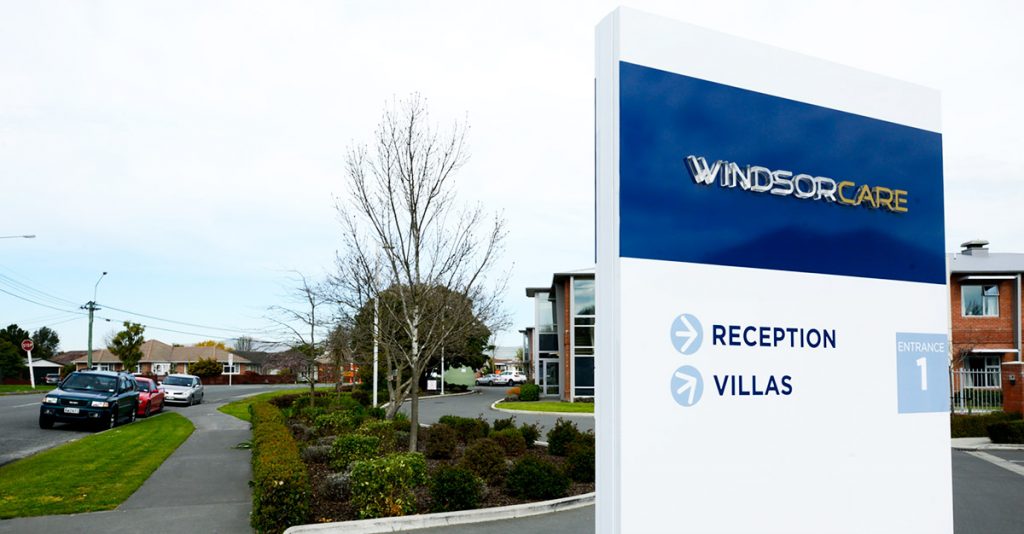
It is plain to see that a considerable amount of effort and thought has been placed into developing this system. First of all, it is concerned with continuously moving forward with a body of fantastic staff. This includes considering how to stay on top at all times through a variety of means, including researching the industry as a whole and looking into more specific improvements. Secondly, the security and continuity for residents remains a constant priority. Reevaluating standards is not just important but absolutely necessary. There is no other way to truly respond to the needs of every resident except for constantly readapting.
Measuring satisfaction and responding to growing needs
Within the same framework, measuring quality of care is a tricky preposition. According to Dr Smith, there is a general feeling that the industry is still based on an institutional model in regards to the dynamics of care. However, the industry is currently grappling with the concept of how to deliver the best kind of care in a more holistic way. Dr Smith and others are willing to innovate and move towards a different model, one that follows a more person-centric approach than usual as it is seen as an almost inevitable evolution that will arrive in time.
It can be said that the one constant within the industry is that no single facility, such as ours, is the same as the next. Consequently, defining the concept of satisfaction can be extremely challenging, particularly in the face of the ever changing clientele. We try to stay away from benchmarking on a macro scale to looking at what satisfaction means for our individual community members at that time. This allows for a fluid support environment, which is possible only with staff trained to be adaptable on a daily basis.
A part of their approach is also to strongly encourage close-knit relationships with the community. According to Warren, it is an absolutely clear guideline that occupancy and reputation are very closely aligned elements. After all, WINDSORCARE has maintained a 96 percent plus year-on-year occupancy rate which is well above the current industry average for occupancy, and is driven by the relationships formed with the community and key providers. As a recognition of this philosophy, the Mayor of Christchurch has even awarded the organization for their service to the community.
Fulfilling the stewardship of their deed
Right now, WINDSORCARE is not looking into expanding their hospital setting further in terms of infrastructure. However, they are certainly looking to increase the liveliness of the facility, to continuously educate and train the staff, and to stay competent. One of the next steps is to consider a lower cost option like serviced apartments in the village in order to serve a wider part of the community and finalize the stewardship of the organization’s deed. Further options would see an expansion of the village with 30 additional cottages. Regardless of where the organization may head, their core ideals will continue to guide their way and provide a unique service to all members of Christchurch’s aged population.
AT A GLANCE
WHO: WINDSORCARE
WHAT: A non-profit organization managing a retirement village and two-story facility housing hospital beds, rest homes, and various activities for elderly residents
WHERE: 1 Horseshoe Lake Rd, Shirley, North East Christchurch
WEBSITE: http://windsorcare.co.nz/
Supporting Partners & Preferred Vendors
Nurse Maude
nursemaudeshop.org.nz
On The Go Physio
onthegophysio.co.nz
Merphait, Gibson&Zwart
mgz.co.nz
Hygiene Direct
hygienedirect.nz
Sponsored Advertorials
- Nurse Maude
- Nurse Maude
- On The Go Physio
- On The Go Physio
- MGZ
- Hygiene Direct


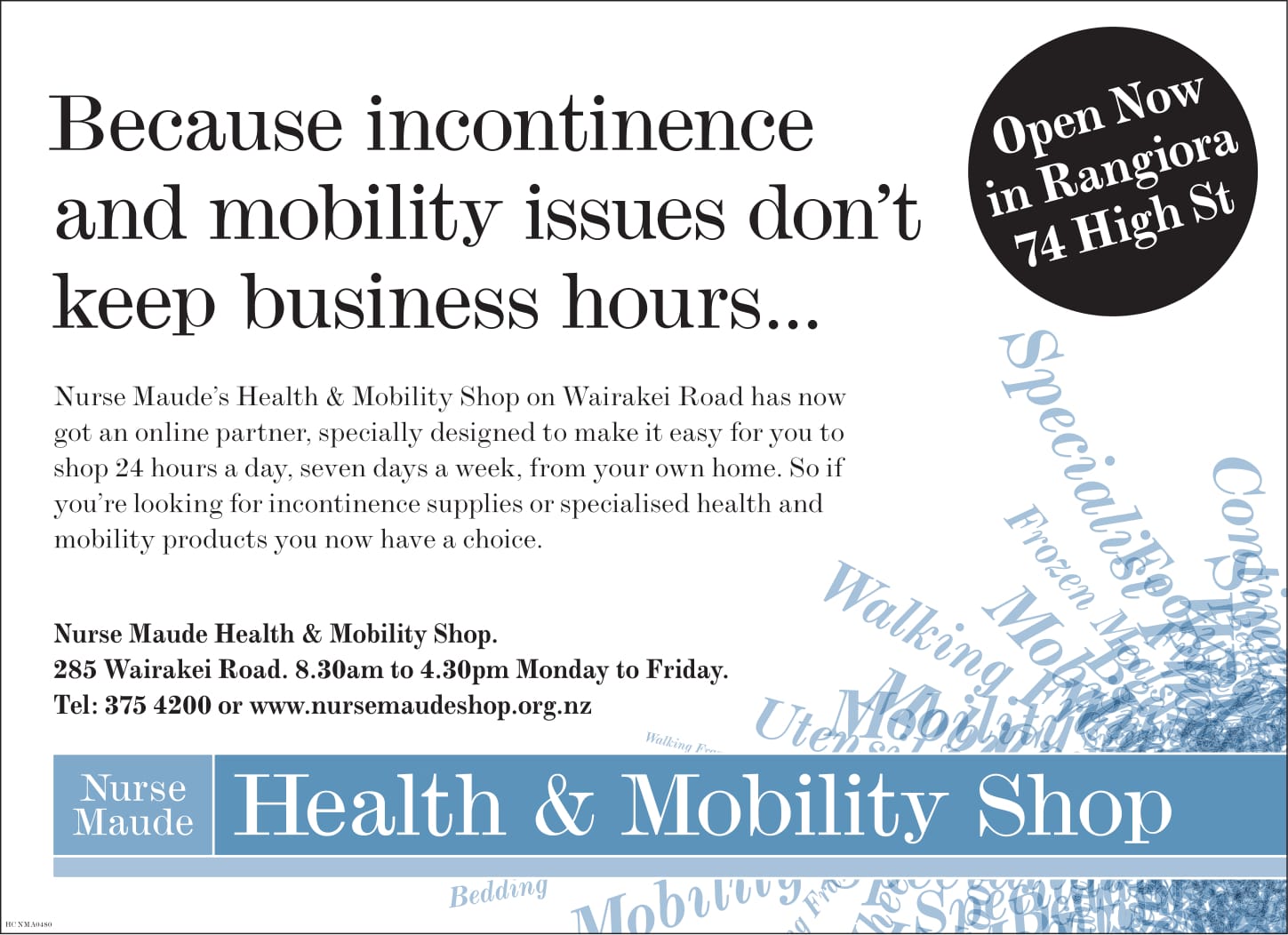
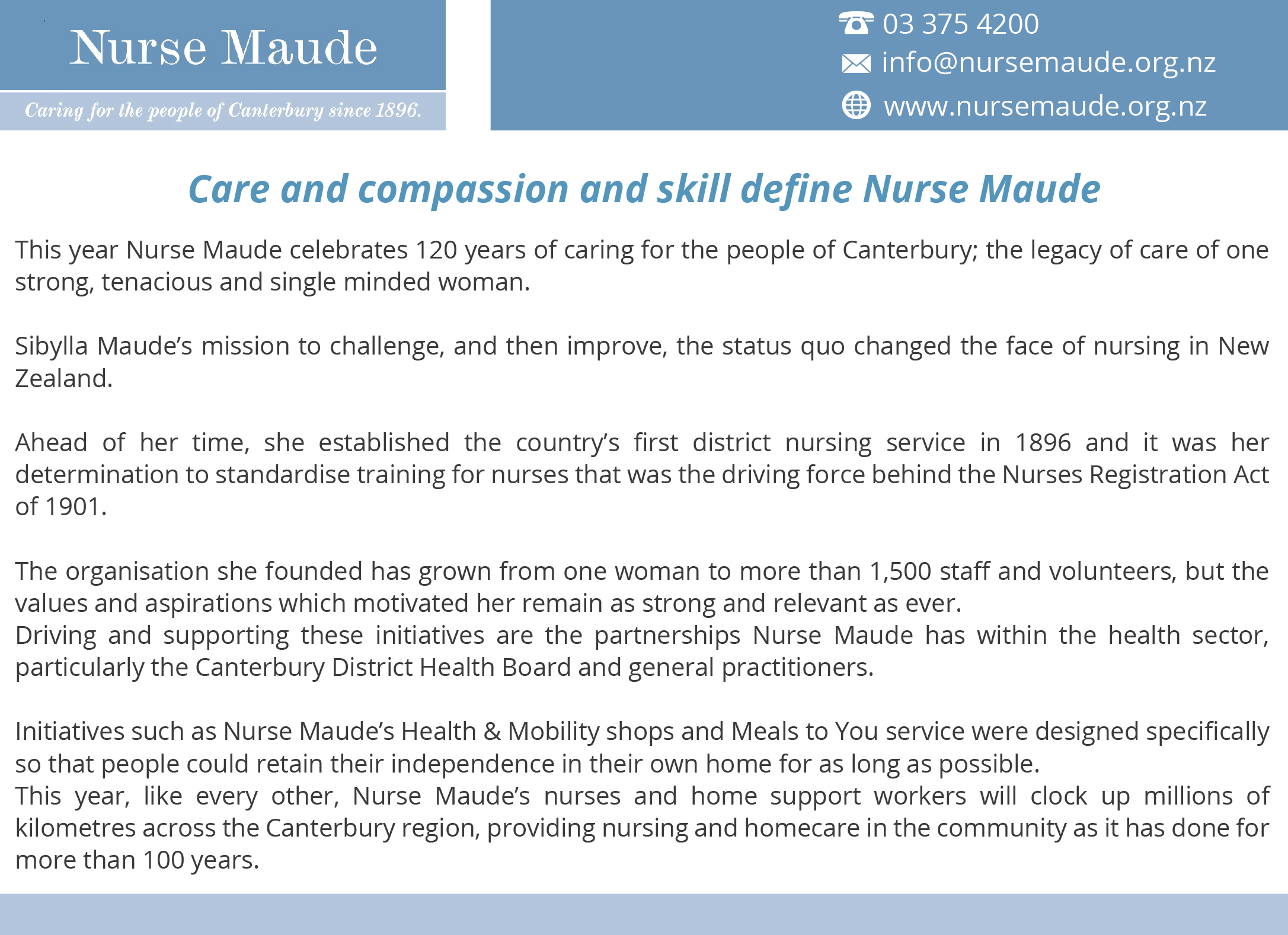
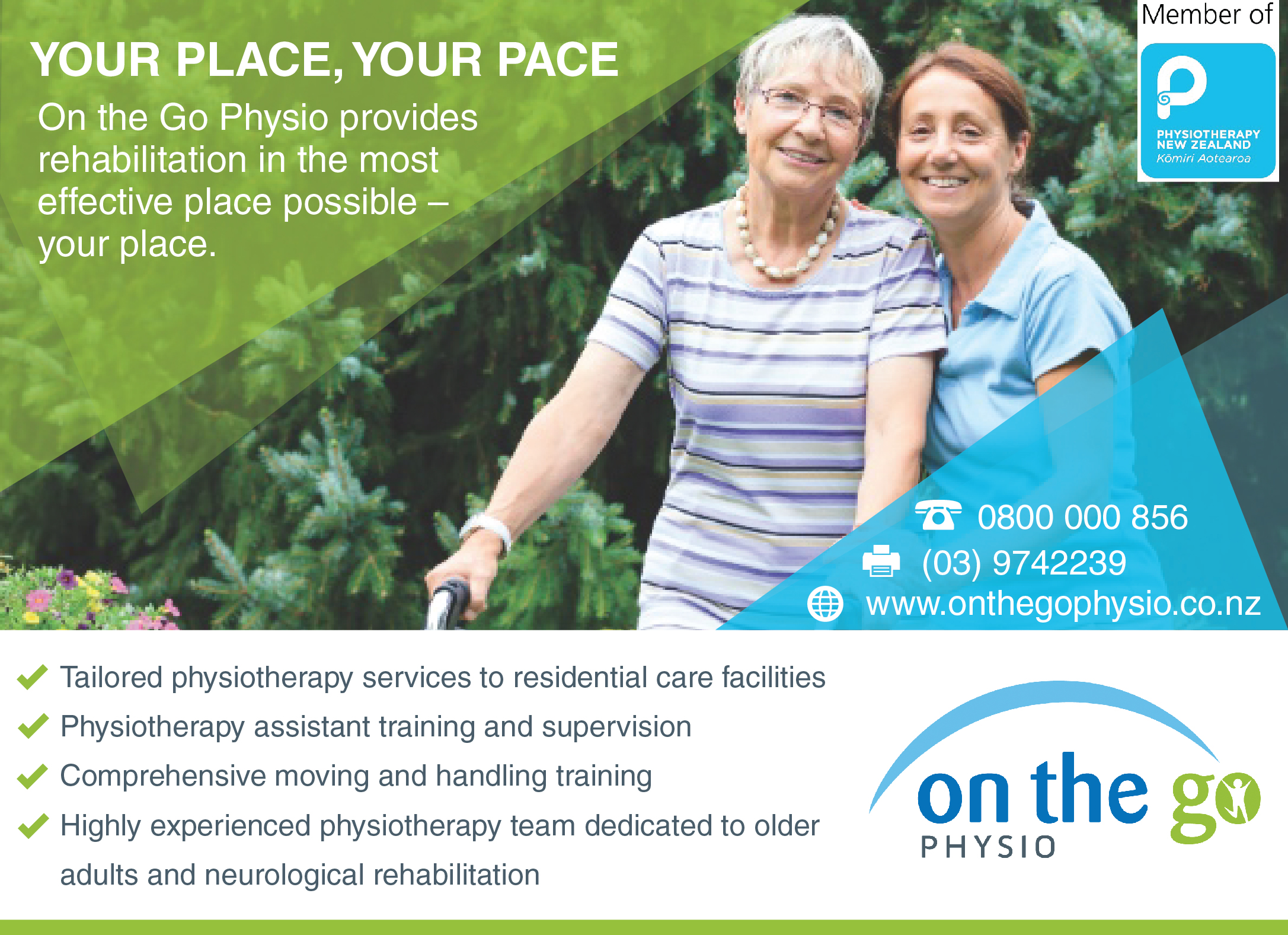
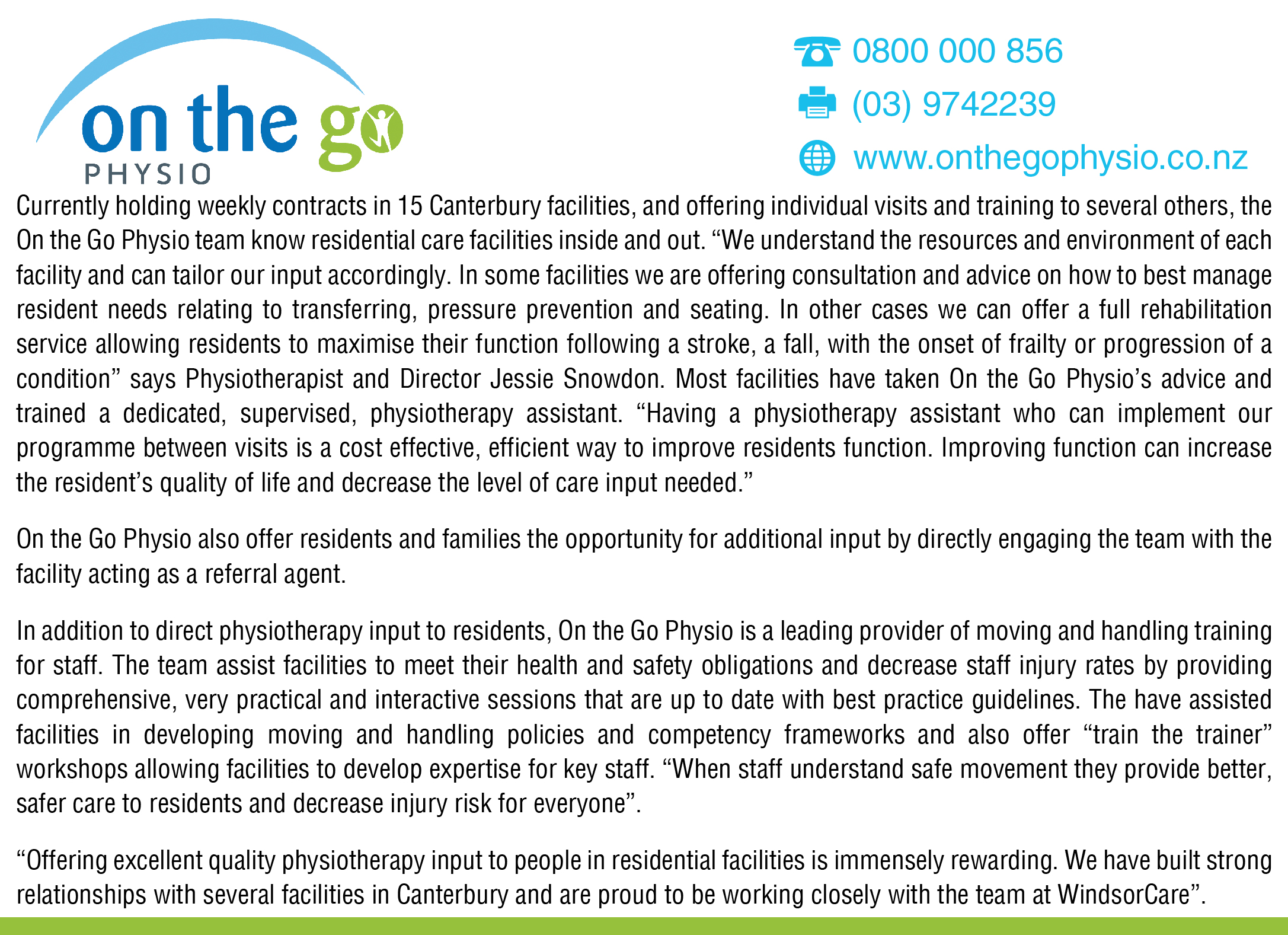
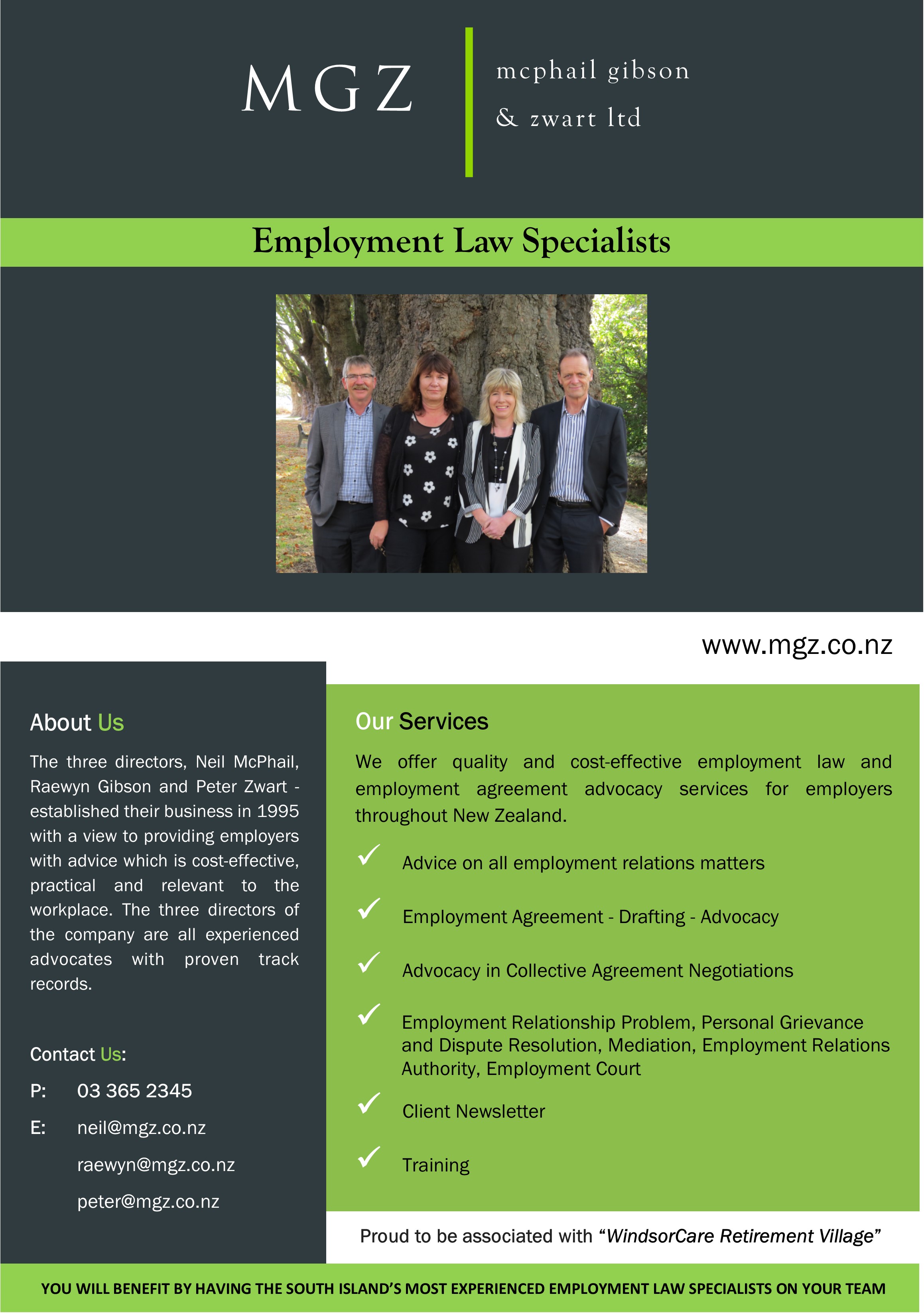

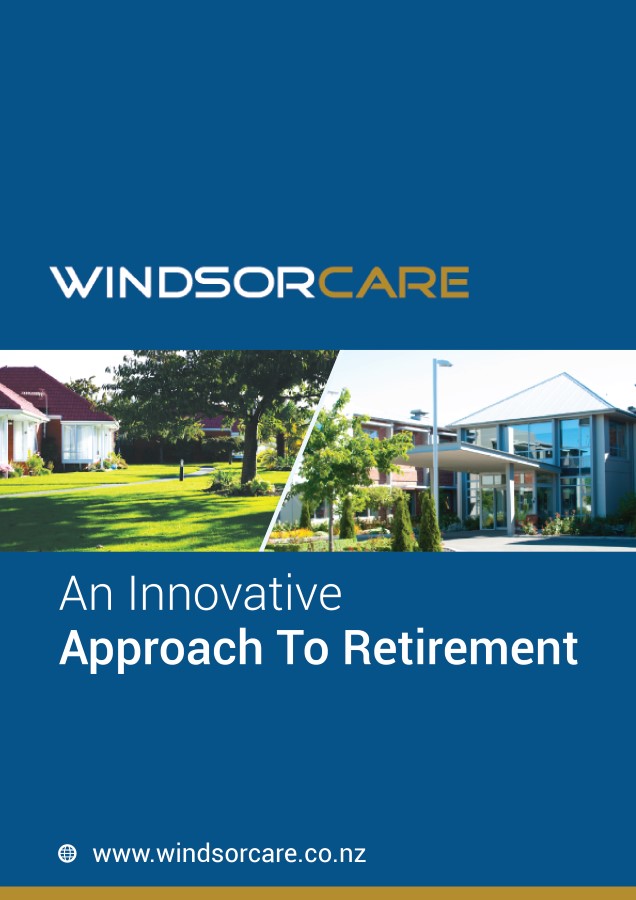
 This information will never be shared to third parties
This information will never be shared to third parties